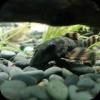Peat moss is higher in organics and nutrients with more potential to cause problems if I overdo it. Peat would be a better source of nutrients if done right, but my aim is to create a substrate with good nutrient storage, and allow dosing and fish poo to provide the nutrients.
Coir has proven to hold moisture well, wet more easily than peat, drain well, decompose more slowly and withstand compression better than peat. Plus coir dust does not have the small sticks and possible seeds that peat has.
http://extension.ore...eat-moss-garden
Another consideration is the relative environmental impact of harvesting.
Peat bogs are one of the planet’s largest and perhaps best ecosystems at long term carbon sequestering. Strip mining them not only releases that carbon, but huge amounts of methane which is a high powered greenhouse gas. It does so at the destruction of a species rich environment that does not bounce back with species diversity in any real sense. And with the destruction of the ecosystem there is an issue of “acid” runoff entering local waterways and impacting the fisheries.
Coir is a by-product from coconut plantations producing food and oil, as well as an extra commodity that brings in income from locally harvested “wild” trees in many locations. The husks being used for coir or fiber help raise the income of some of the world’s poorest people without jeopardizing their food production. And while a lot of Coir comes from south Asia and Indo-Pacific countries it is also being exported from Mexico and Central America.
Modern Coir has very little salt issues, though when it first hit the market it certainly did. Since it is shipped via the ocean it has very low “carbon-points” due transportation and it would be interesting to see the energy input of that ocean freight, compared to the “carbon-points” of peat that is extracted using enormous diesel powered mining equipment and land based transportation.
Mostly, I'm just more comfortable with the idea of "coconut husk" in my tank than I am of "decomposing moss from a bog".
Edited by smirq, 17 November 2013 - 01:10 PM.










